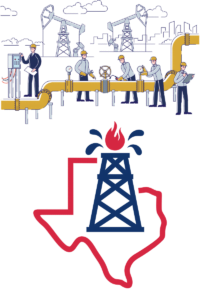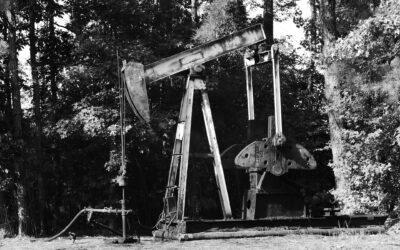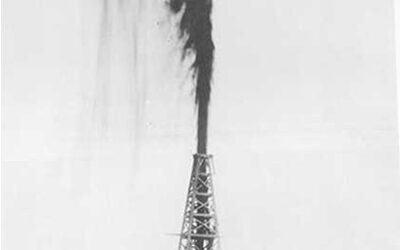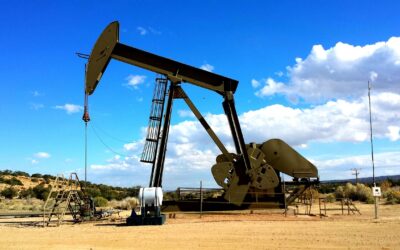 SOUTH TEXAS: 4 types of lucrative oil & gas investment opportunities
SOUTH TEXAS: 4 types of lucrative oil & gas investment opportunities
Insider insights into the South Texas Oil Boom
There are many types of oil & gas investments in South Texas and there is a great deal of work that goes in to oil and gas production and worthwhile investments can be placed within every step. In this post, we are going to discuss 4 types of lucrative oil and gas investments.
1: Exploration
The first is exploration. It is the beginning stage of oil and gas, with companies or projects buying or leasing land to invest in drilling. It is a daring prospect, because if oil is struck the investment can increase tenfold. Unfortunately, all can be lost if oil is not discovered.
This type of oil and gas investment is usually reserved for those who enjoy speculative projects and high risk endeavors.
During the exploration phase, advanced technologies such as seismic surveys and geological assessments are employed to identify promising areas for drilling. Expert analysis and comprehensive risk assessments play a crucial role in evaluating the potential success of exploration projects.
Successful exploration endeavors can open up new oil and gas reserves, contributing to the overall growth and profitability of the industry.
2: Developing
The second form is developing. Developers take advantage of pre-existing reserves in the hopes of unlocking further value. They are slightly less speculative than exploration, but again, there is risk in that the valued resources may not be found.
Developers employ advanced techniques, such as enhanced recovery methods and improved well management practices, to increase production and extend the lifespan of existing wells.
Through strategic investments in infrastructure and technology, developers aim to capitalize on the potential of known reserves, optimizing production and enhancing profitability. tolerance and financial goals.
3: Income
The third form is income, which tends to be the most stable form of oil and gas investments. The goal is to acquire plots of land through lease or purchase that are located over proven oil and gas reserves.
An investor can then be involved in the drilling and extraction of oil and gas, with the only concern that these resources will diminish faster than one would hope. Income-based investments often involve partnerships with experienced operators who manage the day-to-day operations of drilling and production activities.
By aligning with reputable industry players, investors can leverage their expertise to mitigate risks and maximize the long-term revenue potential of the underlying reserves.
4: Services & Support
The fourth form is in services and support offered to the oil and gas industry. These are the companies on the periphery of oil and gas drilling, engaging in transportation, shipping and logistics companies, construction and rigging companies, drilling and refining hardware, and much more.
The benefit in this form is that there is less reliance on the fuel prices to earn a profit. As long as demand is maintained, there will be equipment and resources necessary for oil and gas production.
Service and support companies play a vital role in facilitating the smooth operation of the oil and gas sector. By offering specialized services and expertise, these companies contribute to the overall efficiency and productivity of the industry.
Moreover, diversifying investment portfolios with services and support companies can provide a hedge against fluctuations in oil prices, as demand for their offerings remains relatively stable as long as the industry continues to operate and expand.
Conclusion:
In conclusion, South Texas offers a range of lucrative oil and gas investment opportunities, encompassing exploration, development, income-based investments, and services and support companies. Each investment type comes with its own risks and potential rewards, allowing investors to choose a strategy that aligns with their risk tolerance and financial goals.
Let's chat about what the best investment opportunities are for this year!
This was a great post back in 2014, but plenty has happened in the oil & gas industry since 2014. Check out our current projects click the button below to choose a time and I’ll give you a call.
The classification of crude oil is primarily based on its geographic origin and composition. While there are numerous varieties of crude oil, four main types are commonly recognized:
Light Crude Oil:
Also known as “light sweet” crude, this type of oil is characterized by its relatively low density and sulfur content. Light crude oil is highly sought after due to its high yields of valuable products, such as gasoline, diesel, and jet fuel. It is typically easier to refine compared to heavier crude oils and is often associated with higher market prices.
Heavy Crude Oil:
Heavy crude oil has a higher density and viscosity than light crude. It contains more impurities and sulfur, making it more challenging to refine. Heavy crude oil requires additional processing, such as upgrading and blending, to improve its quality and yield desirable products. It is commonly used for producing asphalt, lubricants, and heavy fuel oils.
Sour Crude Oil:
Sour crude oil contains a higher sulfur content, making it more challenging and costly to refine. The presence of sulfur creates environmental and operational challenges during the refining process. Extensive sulfur removal is necessary to meet environmental regulations and produce cleaner fuels. Sour crude oil often requires specialized refining equipment and technologies to minimize the sulfur content and maximize the value of its products.
Sweet Crude Oil:
Sweet crude oil has a low sulfur content, typically less than 0.5%. It is easier to refine and yields higher amounts of valuable light products, such as gasoline and diesel. Sweet crude oil is in high demand due to its low sulfur content, which aligns with stricter environmental regulations aimed at reducing air pollution and emissions. Refineries prefer sweet crude oil because it requires less complex refining processes.
These four main types of crude oil provide a general categorization based on their characteristics, with each type having its own market value and refining challenges. It’s important to note that within each type, there can be significant variations in properties and composition depending on the specific oil field or region of production.
Oil is a versatile resource that is used in numerous products across various industries. Here are six common products in which oil plays a crucial role:
Transportation Fuels:
One of the most well-known uses of oil is as a fuel for transportation. Gasoline, diesel, and jet fuel are derived from crude oil and power vehicles, airplanes, ships, and trains, keeping the world moving.
Petrochemicals:
Oil serves as a primary feedstock for the production of petrochemicals, which are essential components in manufacturing a wide range of products. Petrochemicals derived from oil include plastics, synthetic fibers, rubber, solvents, dyes, detergents, and fertilizers.
Lubricants:
Oil is used as a base for the production of lubricants, which are vital for reducing friction and protecting machinery and engines. Motor oil, hydraulic fluid, gear oil, and greases are examples of lubricants derived from oil that enable smooth operation and extend the lifespan of various mechanical systems.
Heating Oil:
Oil is used as a heating fuel in many residential, commercial, and industrial settings. Heating oil, also known as fuel oil or diesel oil, is commonly used in furnaces, boilers, and other heating systems to generate warmth during colder months.
Electricity Generation:
Oil is utilized as a fuel source in power plants to generate electricity. Although it is less commonly used for electricity generation compared to coal, natural gas, or renewable energy sources, some regions and backup power systems still rely on oil-fired power plants.
Asphalt:
Oil is a key component in the production of asphalt, which is used for road construction and maintenance. Asphalt, derived from heavy crude oil, provides the durability and binding properties necessary for constructing durable and smooth road surfaces.
These are just a few examples of the many products in which oil plays a critical role. Oil’s versatility and wide-ranging applications make it a vital resource in various industries and sectors of the global economy.
 SOUTH TEXAS: 4 types of lucrative oil & gas investment opportunities
SOUTH TEXAS: 4 types of lucrative oil & gas investment opportunities




